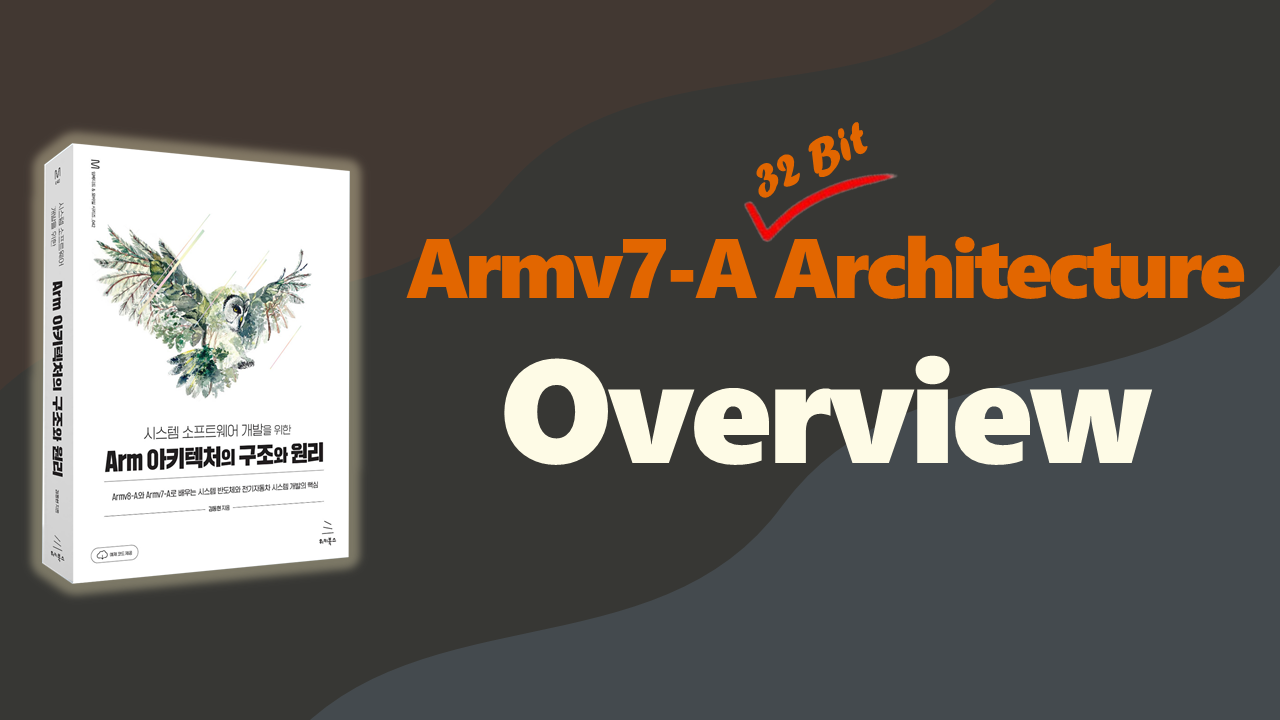![리눅스 커널의 구조와 원리: 인터럽트 [저자 직강 1부-5]강의 썸네일](https://cdn.inflearn.com/public/courses/333194/cover/79593ea5-0a6d-453a-8ead-a54103462943/333194.png?w=420)
리눅스 커널의 구조와 원리: 인터럽트 [저자 직강 1부-5]
김동현 (Austin Kim)
시스템 소프트웨어에서 가장 많이 쓰이는, 최신 리눅스 커널(v6.1)의 인터럽트 핵심 개념을 "디버깅을 통해 배우는 리눅스 커널의 구조와 원리"의 저자가 제대로 설명합니다.
초급
운영체제, Linux, linux-kernel
The basics of system software, the core of the latest Arm architecture (Armv7-A), are properly captured by the author of "Structure and Principles of Arm Architecture for System Software Development"!

Characteristics of Arm Architecture and Arm Processors
Processing of Registers and Assembly Instructions
Software stacks that run at each exception level and processor mode
Types and Operation of Exceptions
AAPCS (Arm Procedure Call Standard), a convention for subroutine calls
The concepts of Non-secure World and Secure World that constitute TrustZone.
The Operating Principles of Barriers, Caches, and Virtual Memory Systems
Who is this course right for?
Junior developer looking to build expertise in system software, including system semiconductors (fabless) and the electric vehicle sector (autonomous driving, infotainment).
Developers in other fields looking to transition their careers to the system software field
System software developers (system semiconductors, electric vehicles) who want to know how to debug in practice using the features of the Arm architecture.
An undergraduate student aiming to attend graduate school in the field of system software (memory, file systems, operating systems).
A job seeker who wants to develop system software in the system semiconductor (fabless) and electric vehicle fields.
Need to know before starting?
Microprocessor
CPU
Embedded
C language
Operating System
Computer Architecture
6,010
Learners
198
Reviews
89
Answers
4.9
Rating
22
Courses
글로벌 저자 & 리눅스 시스템 소프트웨어 개발자 (Arm, RISC-V 아키텍처)
국내 시스템 소프트웨어 분야에서 전무후무한! 'Arm 아키텍처(Armv8-A, Armv7-A)'와 '리눅스 커널' 책을 쓴 저자(2권의 책 모두 대한민국 학술원 우수도서에 선정)이며, 국내 최초로 해외 출판사(Packt)를 통해 "Reverse Engineering Armv8-A Systems" 책(영어)을 집필한 글로벌 저자입니다. 무엇보다 최신 시스템 소프트웨어 트렌드(전기자동차, 시스템 반도체- 시스템 소프트웨어)를 가장 잘 알고 있는 현업 개발자입니다. 또한 시스템 소프트웨어 분야에서 가장 지식 전파 활동을 활발하게 하는 교육자입니다.
'Reverse Engineering Armv8-A Systems: A practical guide to Kernel, Firmware, and TrustZone analysis' 책(영어) 저자, (Packt 출판사)
'시스템 소프트웨어 개발을 위한 Arm 아키텍처의 구조와 원리'(2024년, 대한민국 학술원 우수도서상) 저자
'디버깅을 통해 배우는 리눅스 커널의 구조와 원리' (2021년, 대한민국 학술원 우수도서상) 저자
'프로그래머스 데브 코스: 리눅스 시스템 및 커널 전문가' 메인 강사
2022년 6월, 한국컴퓨터종합학술대회 (KCC2022) - 튜토리얼 발표 [ftrace를 이용해 리눅스 커널 정복하기]
LG전자 '리눅스 커널' 및 'Armv8 아키텍처' 사내 강사(국내 및 해외 개발자 포함) - (2020년~현재)
국내에서 어느 누구보다 리눅스 커널과 Arm 아키텍처(Armv8-A, Armv7-A)를 잘 설명할 수 있는 교육자라고 자신있게 말씀드릴 수 있습니다.
강의문의 : austindh.kim@gmail.com
'시스템 소프트웨어 개발자를 위한 Arm - basic course'
All
75 lectures ∙ (9hr 17min)
$42.90
Check out other courses by the instructor!
Explore other courses in the same field!